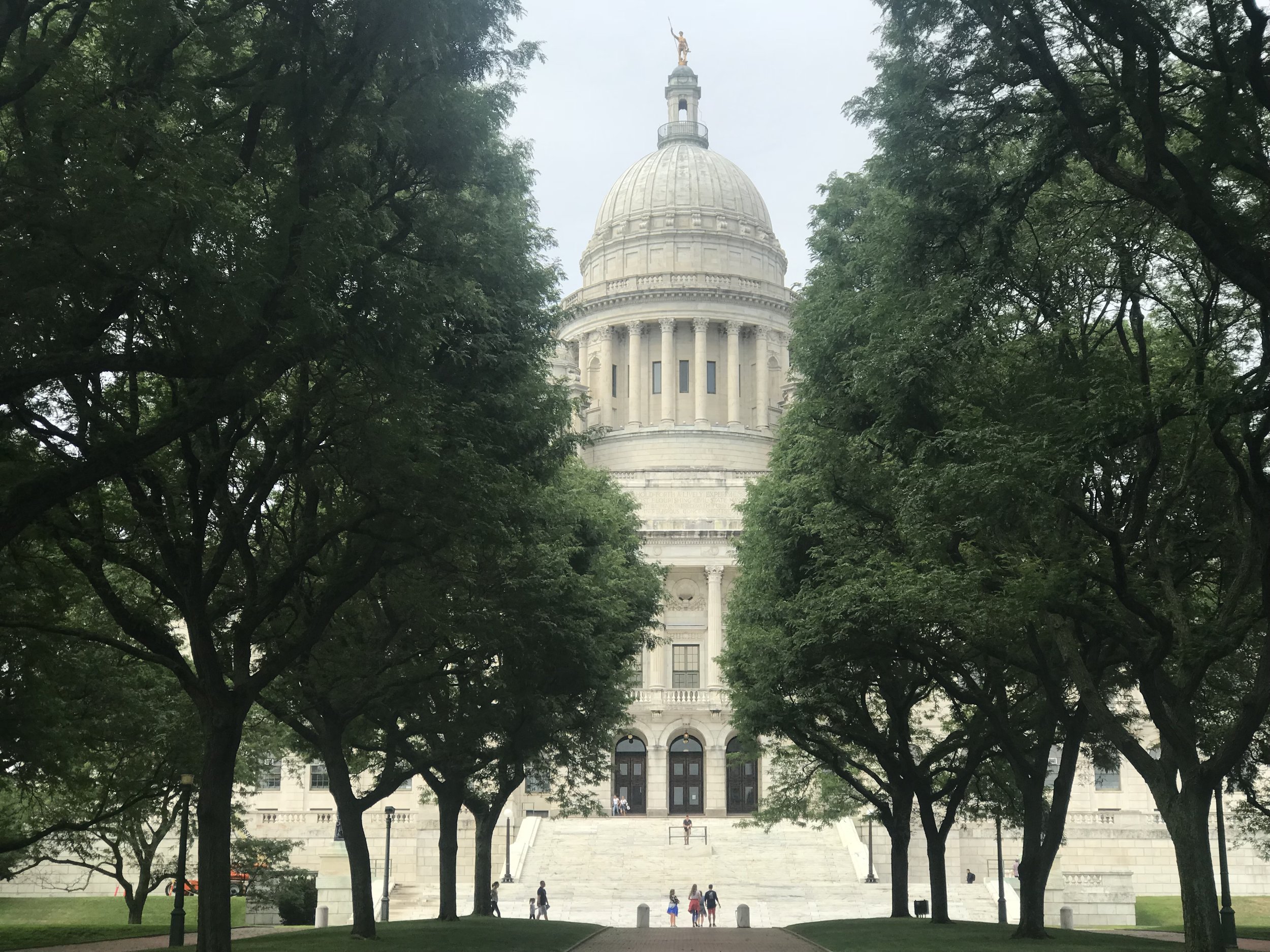Big State, Little State
How the compromises of 1787 distort today’s democracy
By Rick Holmes
Aug. 24, 2018
Anchorage, Alaska – A few weeks ago I was in Rhode Island, the smallest state. I now find myself in Alaska, the largest.
The contrasts are inescapable. The landscape in Rhode Island is friendly, intimate, comfortable. People have lived among its woods and waters for countless centuries. The landscape in Alaska takes your breath away. It makes you feel small and vulnerable, like an ant on a mountainside.
One state is big, one is tiny. You could fit 546 Rhode Islands into Alaska and still have room left over. Alaska, our second-youngest state, still thinks of itself as America’s last frontier. Rhode Island, one of the original 13, was colonized more than 350 years ago. Alaska usually votes Republican, Rhode Island reliably Democratic.
So different and yet so much the same. Both have small populations: Alaska has just 740,000 people rattling around in all that space; Rhode Island has 1,060,000 residents packed in its cozy confines.
And both states have more political clout than their numbers deserve.
When it suits their purposes, politicians have been known to confuse sparse population with civic virtue. Donald Trump, upset that fewer people voted for him than his opponent, bragged that he won more counties in 2016 than Hillary Clinton, as if the 523 people of Petroleum County, Montana, were equivalent to the 10 million people of Los Angeles County.
This, of course, is hogwash. People are what count in a democracy. The Constitution begins with “We, the People,” not “We, the Acreage.”
Except, that is, for two clauses in the Constitution written when the young nation was divided between large states and small states, whose interests were believed to be in conflict. To get the small states on board with the new Constitution, the Founders gave each state two senators. Rhode Island, tiny in land, gets two senators, as does Alaska, tiny in population.
So does California, large in both acreage and population. California has one senator for each 19.5 million people, while Alaska has one for each 370,000 people. That’s hardly representative democracy.
This problem is compounded in the Electoral College, where each state gets as many electors as senators and representatives it sends to Congress. The Electoral College distorts democracy in several ways, especially through the winner-take-all allocation the Founders didn’t require. But the disproportionate representation it gives small states certainly contributes to one of the least democratic outcomes in American politics: In two out of the last five elections, the presidency was awarded to the candidate who came in second in the popular vote.
Thanks to demographic changes that have nothing to do with the constitutional order, these distortions are getting worse. For 150 years, Americans have been moving from farms to cities and suburbs. For the last 30 years, we’ve been sorting ourselves by politics, with cities growing more Democratic and rural areas more Republican.
If those trends continue, according to a recent study by the Weldon Cooper Center at the University of Virginia, by 2040 half the U.S. population will live in just eight states. Seventy percent will live in the 16 most populous states.
That means, says Norman Ornstein of the American Enterprise Institute, that “30 percent will choose 70 senators. And the 30 percent will be older, whiter, more rural, more male than the 70 percent.” That’s a recipe for federal politics even more dysfunctional than the mess we have today.
Identifying a problem is easier than fixing it, but there are some proposals being floated. In California, there are growing calls to divide the state into three or more parts. Democrats have suggested evening the scales by awarding statehood to Puerto Rico and the District of Columbia. Both ideas would be hard to pull off. Only one state has ever been split, and that was during the Civil War, when 41 Virginia counties, opposed to their state’s secession, broke off to form West Virginia. As for admitting new states, that’s always been a political process, with partisans fighting any new entry that might give an advantage to their opponents.
The simplest way to make the government more representative of all the citizenry would be to abolish the Electoral College and allow states with more people to have more members of the Senate. Both would require constitutional amendments, though, and amending the Constitution is hard – not least because three-quarters of the states must vote to ratify amendments. That’s another gift the Founders gave to small states.
Fixing this won’t be easy, but we ought to try. The Constitution didn’t come down from Mount Sinai engraved in stone. Compromises made in the summer of 1787 need not keep us from doing our part to “form a more perfect Union,” one where the people of big states and small states all have an equal voice.
Rick Holmes can be reached at rick@rickholmes.net. You can follow his journey at www.rickholmes.net. Like him on Facebook at Holmes & Co, on follow him on Twitter @HolmesAndCo.

